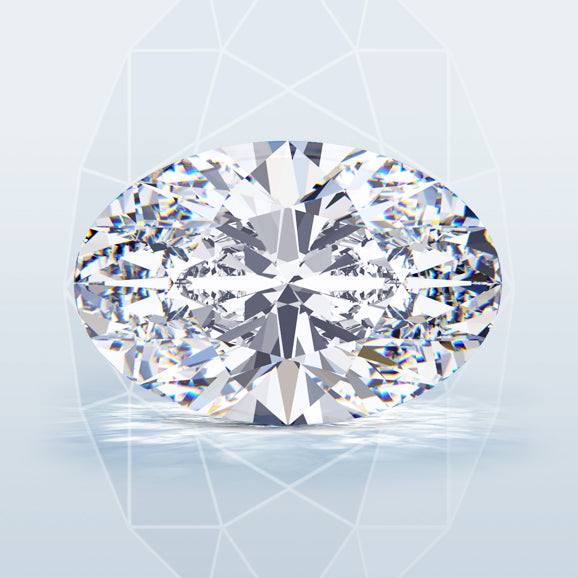
Oval Shape Diamonds Explained
Oval diamonds are a modified brilliant cut of diamond. The current version of the shape was devised in 1957 by Lazare Kaplan. The Oval Elegance diamond cut that Kaplan introduced has 58 facets. The oval shape gives approximately 10% more perceived size than an equivalent weight round cut diamond and yet has almost all the brilliance of the round shape. The Oval shape is the most brilliant of all the fancy cut shapes.
Like other elongated cuts, the oval shape tends to flatter the fingers of its wearers as the length of the gem makes the fingers appear longer and slenderer.
Oval diamonds have no sharp edges, and so they are very robust with little risk of damage from chipping.
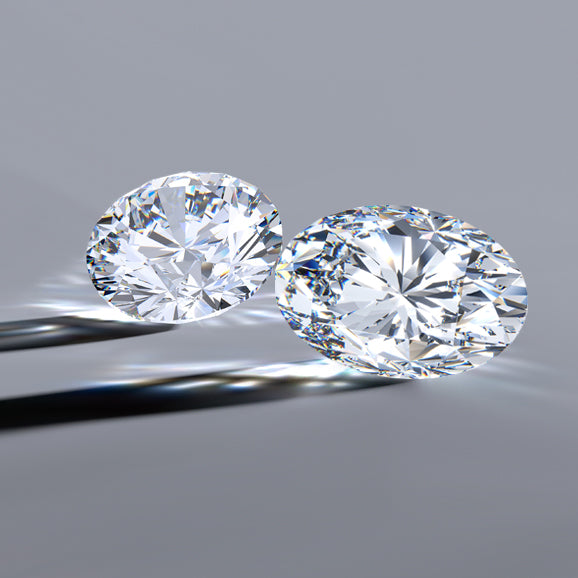
Oval shaped diamonds have been cut for many centuries. The first recorded oval cut diamond was in 1304. Because ovals tend to fit with the shape of a rough gem, before cutting they were relatively easy to make, but they were usually dark with little or no brilliance. Over the centuries, improvements were made to cutting techniques and designs. Not until the introduction of the modern Oval Elegance design was the oval shape able to have a similar brilliance to other brilliant-cut stones.
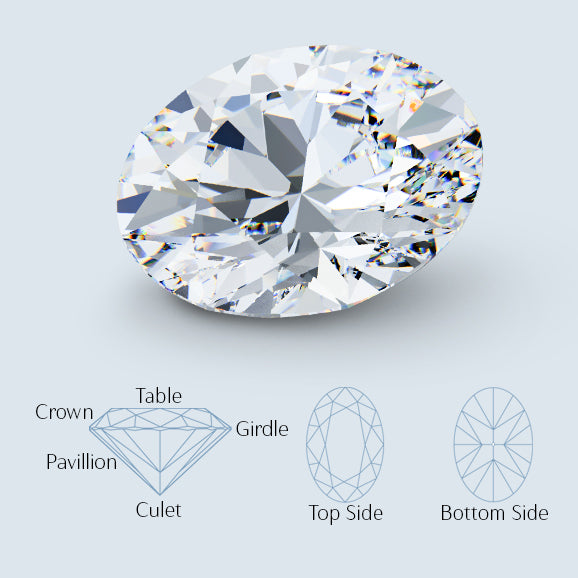
How To Choose Your Oval Cut Diamond?
There is not a single standard shape for oval diamonds; the preference lies with the buyer according to their taste. The classic shape of the oval has a ratio of length to width of around 1.35 -1.50. Buyers choosing an oval destined to be surrounded by smaller stones in a halo might prefer a more extended, more narrow profile. A pendant might have a slightly wider profile.
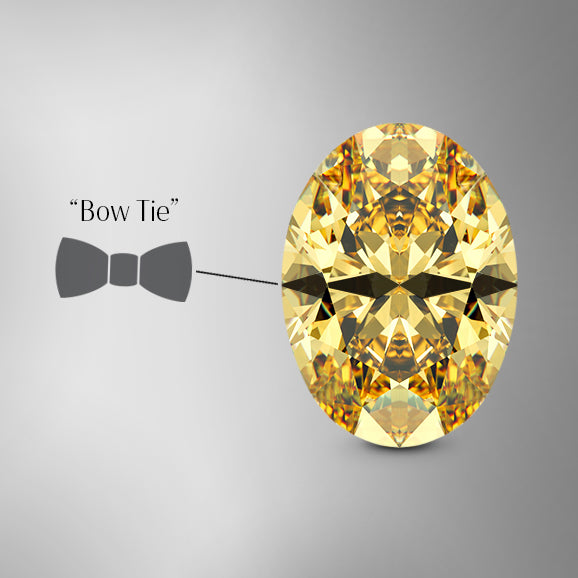
The Bow-Tie Effect And Oval Diamond
Oval diamonds, in common with other elongated shapes, can exhibit an effect called bow-tie. Bow-tie is the appearance of dark triangular areas on opposite sides of the middle of the gem.
Bow-tie is caused by light escaping from the sides of the diamond. The missing light gives rise to the dark areas visible through the top (table) of the gemstone. Bow-tie can be seen as an enhancement to the appearance of the gem. If the effect is too pronounced it detracts from the beauty of the stone. As with other aspects of choosing a diamond, this is a matter of personal taste; however, experts recommend a depth ratio in the region of 62-66% to minimise the effect. If a diamond is cut with too much depth the brilliance of the diamond is affected, it will look somewhat dull.
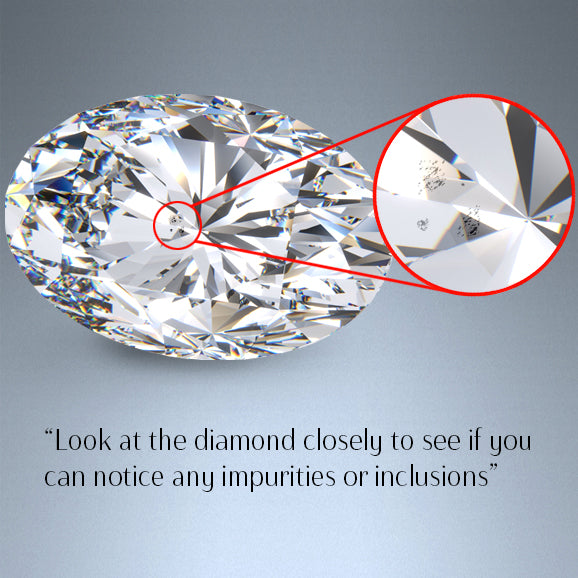
Get The Cut Right For A Brilliant Diamond
Choosing the right oval diamond is about getting the best light performance, the right shape and good contrast of the patterns within the gem. These are all related to the quality of the cutting. Also, a well-cut oval diamond can hide inclusions and colour shading. You can save money because you can choose slightly lower grades for clarity and colour when the diamond is well cut.
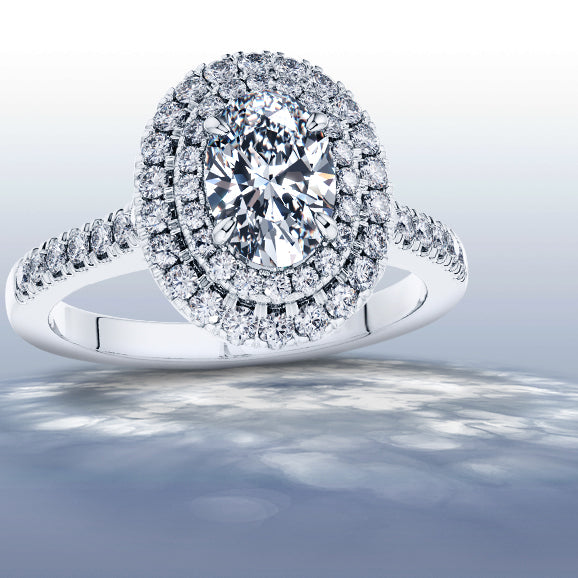
Experts suggest that a clarity rating of VS2 or SI1 will give a beautiful stone – if well-cut. If looking at a VS2 diamond check that there are no visible inclusions when looking into the diamond from above.
For colour, very much a subjective choice, on the GIA grading from D to K, if you want a very white looking diamond then pick a G grade diamond or better. If you plan to place the diamond in a yellow gold setting, then you might choose a J or K colour graded stone where the gold will show off the yellow tint of the gem.
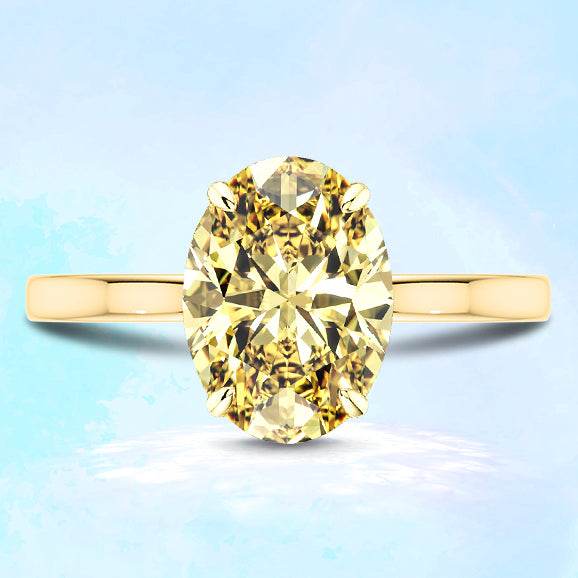
Do Not Pay Too Much!
A typical oval diamond will cost around 20-30% less than the same weight and quality of a round diamond. The lower price is because there is less waste when cutting an oval as compared to a round. Contributing to the lower cost is the lower demand for oval shape diamonds. People are willing to pay a premium for round-cut diamonds. Worldwide, about 75% of all diamonds sold are round-cut brilliants.
More money can be saved by choosing the colour and clarity carefully. Combined with the perceived additional size of around 10% as compared to round cut diamonds, a well-chosen oval diamond can be a bargain!
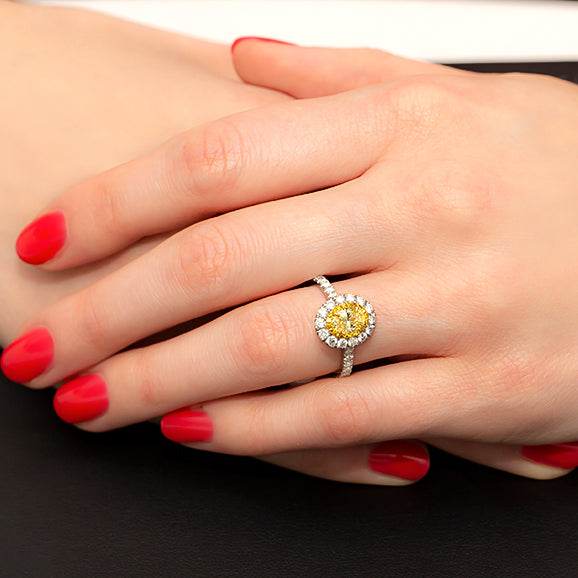
Choose The Right Setting
Oval diamonds do not have fragile points or thin girdles, so they do not need protection from impacts as some shapes do. Most ovals are set using a four-prong setting. Larger stones may need six prongs to hold them securely.
If budget allows, go for a halo setting. The smaller diamonds surrounding the central diamond will tend to make the main stone look larger while also concealing the prongs holding the stone in place.
For rings that are likely to be worn every day, or might be mistreated, a bezel setting can be used. A bezel setting is a band of metal surrounding either the whole or half of the diamond. The drawback to this setting is that it will reduce the brightness of the gem.
A well-cut oval diamond is a brilliant gem; it looks more substantial than the same size round shape diamond and costs significantly less money. The shape of the stone can flatter the wearer's hand. The physical strength of oval diamonds makes them suitable for all types of jewellery, and they do not need special protection when mounting them into jewellery.
The brilliance of the cut enables buyers to economise on the clarity and colour without affecting the overall appearance of the diamond, making them great value for money.
Finally, the shape is both elegant and impressive; an oval diamond will always be unusual and so attract attention from all who see it.